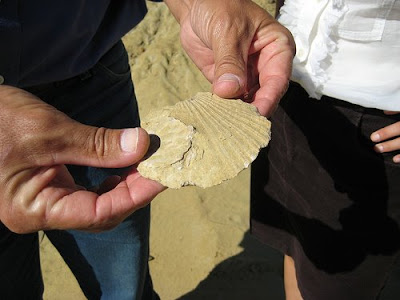I am finally back from San Diego and will begin a series of posts to update on some of what I learned while on the trip. One of the first things that my advisor Teddy and I did was to head to
Chula Vista to meet with Raymond Daily from
Entilligant Constructive Systems. Ray and his crew are working on a holistic structural system that disturbs the site minimally, is easily assembled on site (all the joints are mechanical and can be put together by a single person in a matter of minutes), can be modified in a
matter of minutes, can expand horizontally and vertically, and can be completely reused and/or recycled. Think of it as a full scale
Lego set.

The system is still being tested and no images are available, this image from Entilligant other systems.
The system is in its infancy, and a bit over designed right now, but it is full of promise. A promise that, according to Ray, is inspired by
Buckminster Fuller and ideas of
biomimicry, Raymond's degree is in biology before he chose to make his living in the construction industry. Homage to Bucky notwithstanding, what the
Entilligant system reminds me more of is Cedric Price's Fun House as the system allows to grow by adding bays or hanging new elements in every direction as new programs arise.

 Finally, the site of my thesis project is in the northwester side of San Bernardo. It is in land that the developer had to donate to the municipality by law and Oscar Romo and his organization are trying to have donated to them. Oscar's idea is to build about 30 houses, a community center, a waste water treatment plant, and a plant nursery. I am thinking of focusing on the design of the community center and houses, while also doing the master plan for the other programs in the 2,500 square meter site. However, I also think it could be more interesting to tackle all the programs holistically.
Finally, the site of my thesis project is in the northwester side of San Bernardo. It is in land that the developer had to donate to the municipality by law and Oscar Romo and his organization are trying to have donated to them. Oscar's idea is to build about 30 houses, a community center, a waste water treatment plant, and a plant nursery. I am thinking of focusing on the design of the community center and houses, while also doing the master plan for the other programs in the 2,500 square meter site. However, I also think it could be more interesting to tackle all the programs holistically. The site itself is barren, looking like a beach covered long ago and now exposed.
The site itself is barren, looking like a beach covered long ago and now exposed. Shell and other marine fossils can be found throughout the site
Shell and other marine fossils can be found throughout the site ground on the site
ground on the site The site from the top.
The site from the top.


















